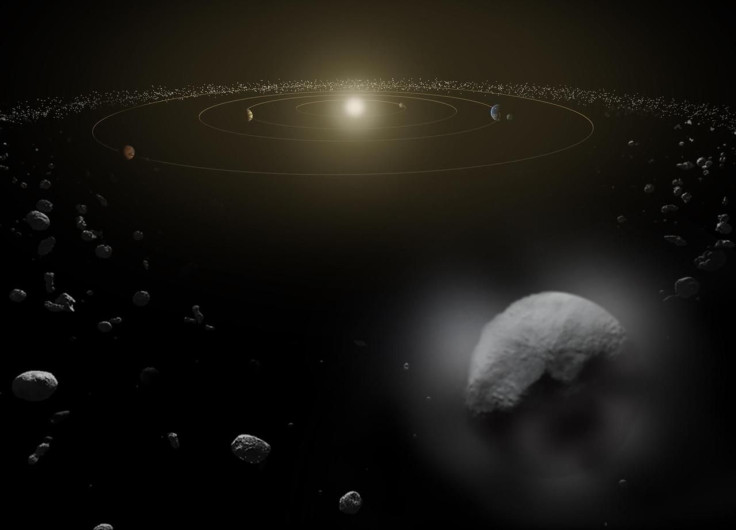3 Gigantic Asteroids Will Make Close Approach To Earth This Week
KEY POINTS
- Three giant asteroids will be zipping by Earth this week
- The biggest near-Earth asteroid is as tall as the Space Needle in Washington
- Asteroids 2020 TY1 and 2019 XS are included in the European Space Agency's Risk List
It's not every day that Earth gets a visit from gigantic asteroids, but in the next few days, three huge near-Earth asteroids (NEA) will be zipping past the planet, according to NASA's Center for Near-Earth Object Studies (CNEOS).
Asteroid 2020 UW2 will be the first of the three objects to enter Earth's vicinity. The NEA will fly by the planet at a distance of 3.4 million miles from the Earth's surface on Thursday at 11:52 p.m. EST, according to CNEOS' Close Approach Data Table.
Asteroid 2020 UW2 has an estimated diameter of 206 feet (63 meters), making it potentially taller than the Leaning Tower of Pisa in Italy — the freestanding bell tower that stands at 185 feet.
The Apollo asteroid, which is estimated to be traveling at a speed of 4 miles per second, is not included in the European Space Agency's Risk List, which means it does not pose a risk to Earth during its upcoming flyby.
A day after 2020 UW2's visit, an even bigger asteroid called 2020 TY1 will zoom past Earth, according to CNEOS' data. The giant NEA dwarfs asteroid 2020 UW2 in terms of size, with the former measuring an estimated 590 feet across. This makes 2020 TY1 about as tall as the Space Needle in Seattle, Washington, which stands at 604 feet.
Asteroid 2020 TY1 will be making its way past Earth on Friday at 11:37 p.m. EST. The NEA is currently under close observation of the ESA as it has a non-zero chance of hitting Earth and has been included in the agency's Risk List.
On Saturday, the third asteroid will be zipping by Earth at 4:59 p.m. EST. Though significantly smaller than 2020 TY1, the NEA, called 2019 XS, is still relatively large. This asteroid measures 282 feet (86 meters) across, making it nearly as tall as the Statue of Liberty in New York, which stands at 305 feet.
According to CNEOS, 2019 XS will be flying by Earth at a distance of 3.3 million miles from the planet's surface. The NEA is also being monitored closely by the ESA and has been included in the space agency's Risk List and Priority List.

© Copyright IBTimes 2024. All rights reserved.





















